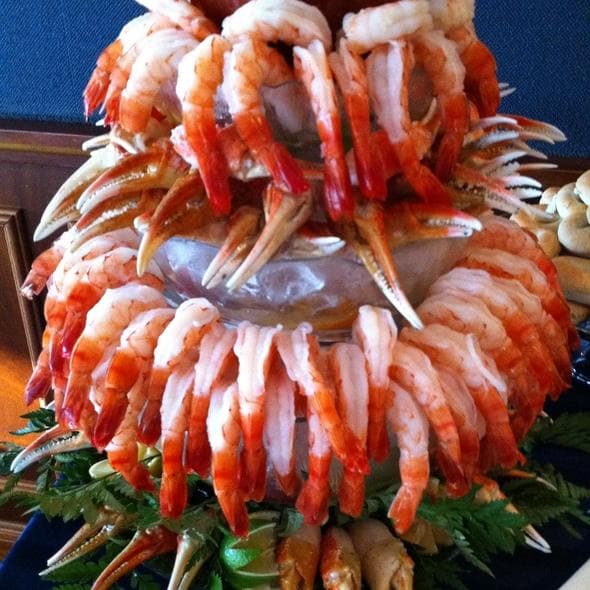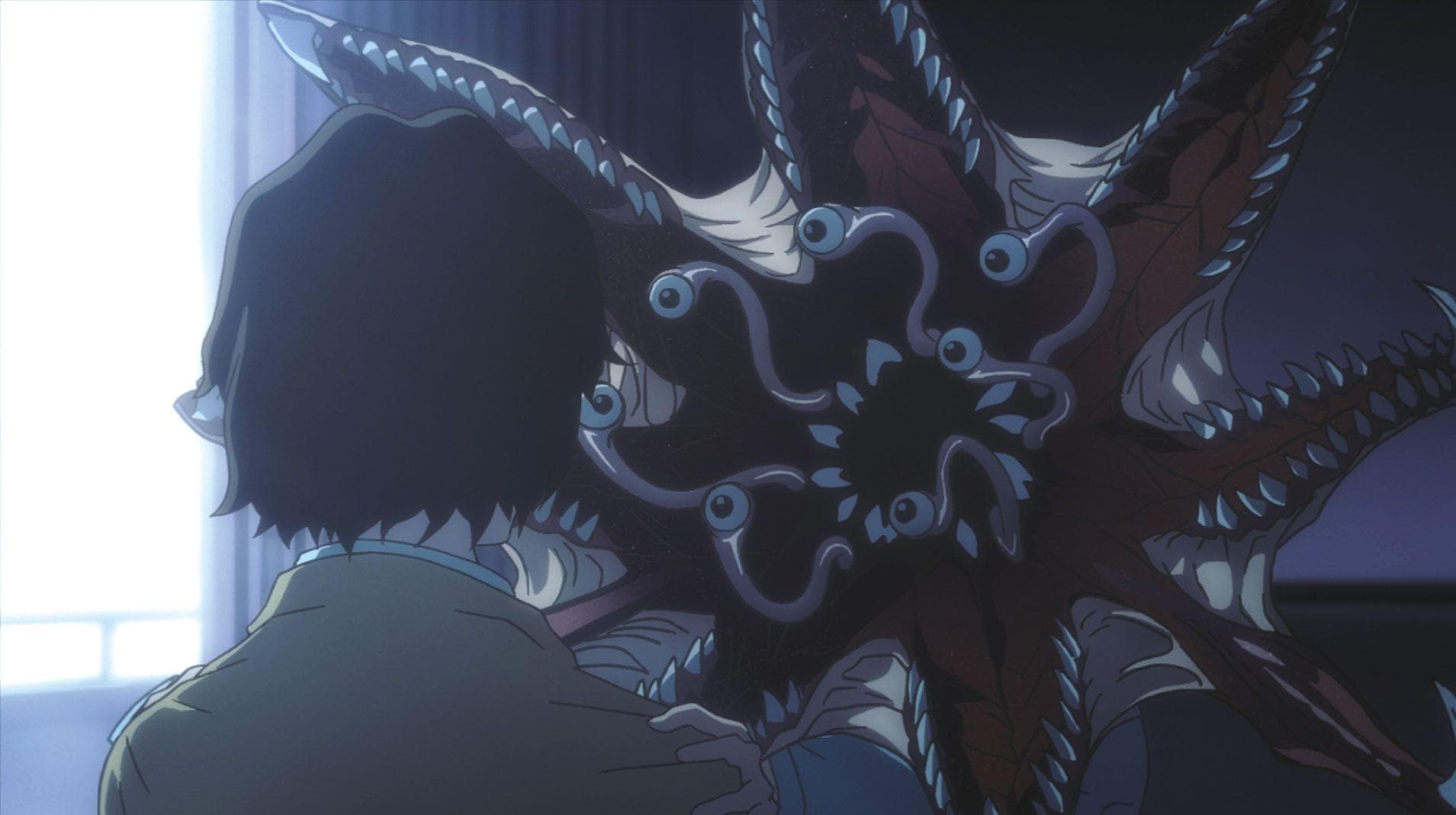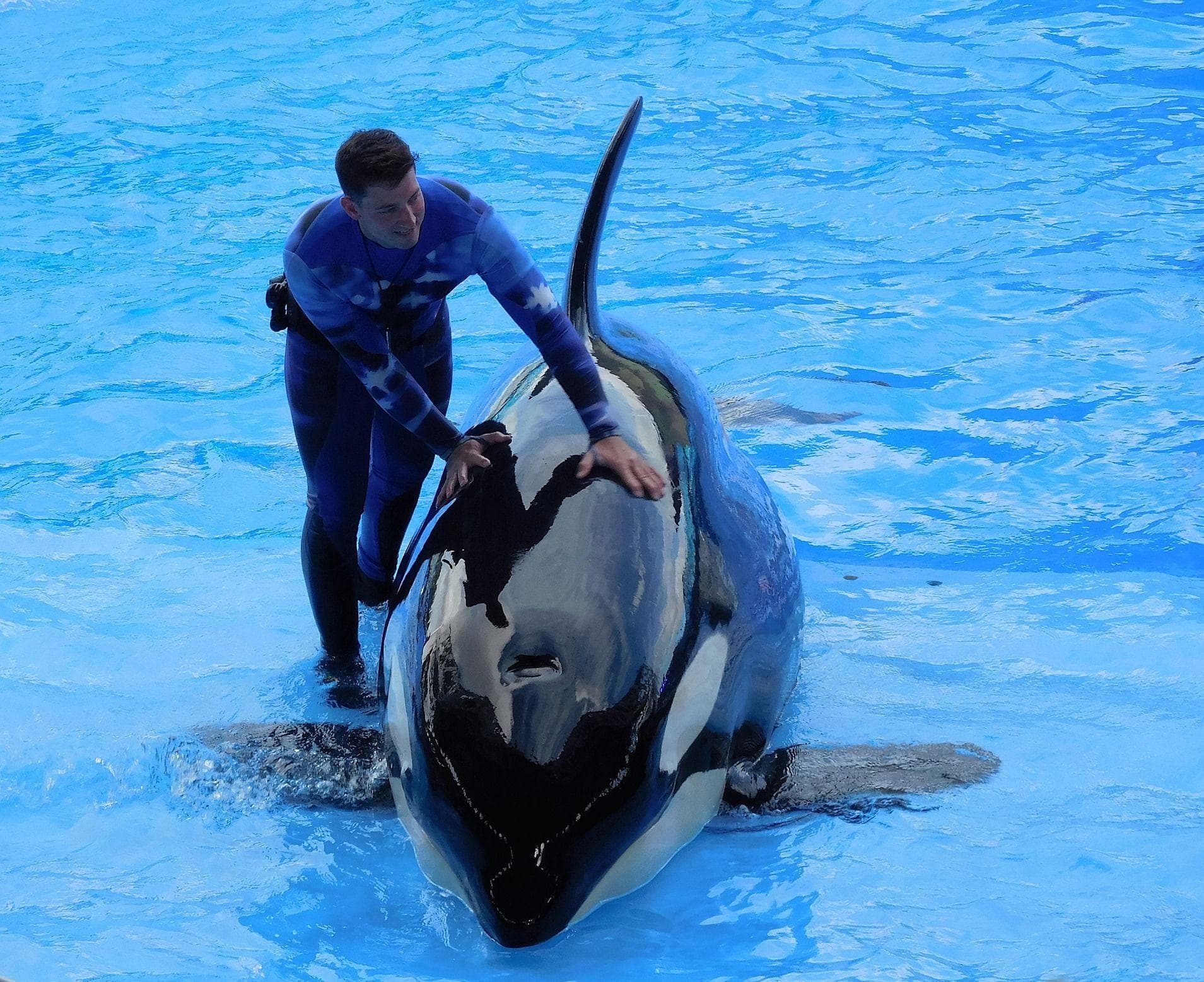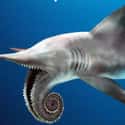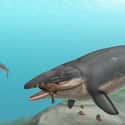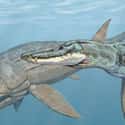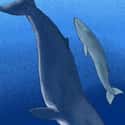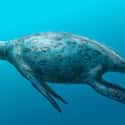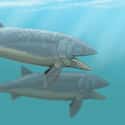-
(#1) Dunkleosteus, An Armored Death Machine
This ancient fish lived 400 million years ago, but its bite has stood the test of time. Scientists believe the Dunkleosteus had the strongest bite of any fish ever discovered - one that could be compared to the bite of a Tyrannosaurus rex. Scientists have crunched the numbers and determined that, just at the tip of its fang, this fish’s bite could measure at 8,000 pounds per square inch. They were absolute apex predators, preying on sharks and basically anything it could catch (everything). Dunkleosteus was also 33 feet long from tooth to tail and covered in thick armor-like plating, making it one of the ocean’s first giant predators.
-
(#2) Megalodon
- Carcharocles megalodon
Measuring at more than 50 feet long, the megalodon was the largest known shark of all time. Their jaws alone were large enough for a full-grown person to walk through with ease, and they used those jaws to hunt whales. To put it in perspective, researcher Peter Klimey with the University of California at Davis said, "A great white is about the size of the clasper, or penis, of a male megalodon.”
Scientists believe that megalodons hunted whales by first ripping off their tails and fins - immobilizing their prey so they could more easily feast. It is also believed that the extinction of these giant sharks is what allowed whales to reach the enormous sizes that they are known for today. Researchers confirmed that the last megalodon died only 2.6 million years ago, right around the same time the evolution of the first humans began to take place.
-
(#3) Helicoprion, The Spiral-Mouthed Killer
Terrorizing the seas nearly 300 million years ago, the Helicoprion was a bizarre species of shark that sported one of the craziest sets of teeth in natural history. This unusual feature has been the subject of widespread debate in the scientific community for a century, and it’s easy to see why. The only fossils that have been found of this animal contain sets of spiraled teeth, and scientists are still trying to figure out just how they would have possibly fit into the shark’s mouth.
What they do know is that, like many modern sharks, the Helicoprion most likely had to replace their teeth pretty regularly. And although many illustrations show the Helicoprion with a buzz-saw mouth, some scientists believe that the tooth-spiral may have actually been located inside the shark’s throat. Others claim it was more like a ratfish than a shark, with its teeth positioned at the rear of its jaw.
-
(#4) Mosasaurus
The Mosasaurus became an international celebrity after its breakout performance in Jurassic World, and the real-life version is just as impressive. These giant reptiles could likely swallow most of their prey whole but preferred slicing meals into bite-sized morsels with their backward-bending teeth.
Paleontologists have been studying these animals for years, and a recent discovery has shed new light on the early lives of mosasaurs. Researchers examined two baby mosasaurs and learned that they actually spent their early lives in the open ocean. This discovery has led some scientists to believe that mosasaurs gave birth to live young.
-
(#5) Liopleurodon
The Liopleurodon was a giant marine reptile and one of the fiercest predators of the Jurassic period. These massive sea monsters could grow up to 30 feet in length (although some fossils suggest even larger sizes) and had sizeable teeth that would have made a quick meal out of most marine life.
Despite its size, scientists estimate this reptile probably swam surprisingly fast, and like many sharks, Liopleurodon had an excellent sense of smell, which it used to locate prey. While this all may sound intimidating, chances are Liopleurodon was not even the largest animal in its class; that title most likely goes to Kronosaurus.
-
(#6) Jaekelopterus, A Sea Scorpion Bigger Than You
Jaekelopterus reigned as an apex predator nearly 400 million years ago and was probably willing to eat anything smaller than itself - including members of its own species. These arthropods grew to over eight feet long and had huge, spiked claws that could ensnare fish with ease. Experts believe the Jaekelopterus ambushed prey with its claws before tearing the meal apart. Jaekelopterus is the largest discovered species of arthropod, a group that includes insects, arachnids, lobsters, and crabs.
-
(#7) Livyatan Melvillei, The Whale That Ate Whales
Named after Herman Melville, the author of Moby Dick, Livyatan melvillei was a massive species of sperm whale that is believed to have preyed on primarily baleen whales. This creature lived only 12-13 million years ago, which is frighteningly recent when it comes to the span of geological time. And while it is estimated to have been about the size of a modern sperm whale, it had foot-long teeth that suggest its food of choice was quite a bit bigger than your average squid.
Modern sperm whales hunt by using suction - basically sucking prey directly into their giant mouths. Livyatan, however, most likely hunted in a fashion similar to that of orca whales, biting and tearing at their prey. And, yes, a human being could easily fit inside of Livyatan's mouth, making the whale in Melville’s beloved novel seem a lot less fictional.
-
(#8) Plesiosaurs, Almost Too Strange To Believe
Plesiosaurs are made up of more than one species and lived about 135 million years ago. These long-necked predators served as the main inspiration for the infamous Loch Ness monster, and their unique anatomy has placed it at the center of controversy in the scientific community. Mary Anning, the renowned paleontologist who first discovered these creatures, was actually accused of forgery when she first brought a Plesiosaurus fossil to her colleagues. Interestingly, their iconic long necks were actually not very flexible, making most depictions of them fairly inaccurate.
-
(#9) Stethacanthus, An Ancient And Extraordinary Shark
This bizarre shark wasn’t the largest fish in the sea, but it is noteworthy thanks to one unique trait. Stethacanthus had an extremely unusual dorsal fin, completely unique in the shark fossil record, which scientists are still trying to understand. One suggestion is that male Stethacanthus used their anvil-shaped fin to attract mates, but others believe it could have been used to intimidate potential predators looking to munch on this cat-sized shark. Either way, these small, slow sharks were probably bottom-feeders.
-
(#10) Leedsichthys, The Largest Fish Ever
Even though scientists originally overestimated the size of this giant fish by whopping 40 feet, it is still considered to be the largest bony fish ever discovered. In fact, the Leedsichthys was so big that its gill bones have sometimes been mistaken for the bones of pterosaurs. Although they could grow up to 55 feet in length, their great size didn't make them great hunters. Like many sea giants, Leedsichthys survived by feeding on some of the smallest creatures in the sea: Plankton probably made up a majority of their diet, although it’s difficult to pinpoint the feeding habits of an extinct animal. Scientists believe that, even though the largest discovered specimen was around 55 feet, that these animals could likely have grown to be even bigger.
-
(#11) Ichthyosaur
- Ichthyosauria
Another of Mary Anning's discoveries was the Ichthyosaurs, a marine reptile that looked eerily similar to a modern-day dolphin. This is due to a process known as convergent evolution, which happens when species that are not related to each other evolve to have similar body shapes.
Ichthyosaurs also share similar body traits with mackerel and tuna, the fastest living fish in the sea, and it is believed that ichthyosaurs were incredibly speedy. Their powerful tails have the same crescent shape and were likely assisted by powerful muscles, allowing them to reach super fast speeds.
New Random Displays Display All By Ranking
About This Tool
When it comes to scary creatures in prehistoric times, most people may think of dinosaurs. However, dinosaurs are only the overlords on land. In fact, there are many more terrifying creatures than dinosaurs in history, and they always hide on the bottom of the ocean, threatening other sea creatures. Many fossils record terrifying marine animals, some of which are even small in size.
In the dark ocean, there are tens of thousands of known or unknown marine lives, such as sharks, whales, and other reptiles dominated the oceans for millions of years. Here the random tool lists 11 of the scariest sea creatures in the oceans ever, some of them were already extinct.
Our data comes from Ranker, If you want to participate in the ranking of items displayed on this page, please click here.

